Link
I don’t like doing this normally. But I need all the help I can get.
Thank you!
#cancer#this is what cancer looks like#cervical cancer#help please#cancer sucks#adoption#medical bills#gofundme#donations#thank you
3 notes
·
View notes
Text

Writing with Color: Description Guide - Words for Skin Tone
We discussed the issues describing People of Color by means of food in Part I of this guide, which brought rise to even more questions, mostly along the lines of “So, if food’s not an option, what can I use?” Well, I was just getting to that!
This final portion focuses on describing skin tone, with photo and passage examples provided throughout. I hope to cover everything from the use of straight-forward description to the more creatively-inclined, keeping in mind the questions we’ve received on this topic.
So let’s get to it.
S T A N D A R D D E S C R I P T I O N
B a s i c C o l o r s

Pictured above: Black, Brown, Beige, White, Pink.
“She had brown skin.”
This is a perfectly fine description that, while not providing the most detail, works well and will never become cliché.
Describing characters’ skin as simply brown or beige works on its own, though it’s not particularly telling just from the range in brown alone.
C o m p l e x C o l o r s
These are more rarely used words that actually “mean” their color. Some of these have multiple meanings, so you’ll want to look into those to determine what other associations a word might have.

Pictured above: Umber, Sepia, Ochre, Russet, Terra-cotta, Gold, Tawny, Taupe, Khaki, Fawn.
Complex colors work well alone, though often pair well with a basic color in regards to narrowing down shade/tone.
For example: Golden brown, russet brown, tawny beige…
As some of these are on the “rare” side, sliding in a definition of the word within the sentence itself may help readers who are unfamiliar with the term visualize the color without seeking a dictionary.
“He was tall and slim, his skin a russet, reddish-brown.”
Comparisons to familiar colors or visuals are also helpful:
“His skin was an ochre color, much like the mellow-brown light that bathed the forest.”
M o d i f i e r s
Modifiers, often adjectives, make partial changes to a word.The following words are descriptors in reference to skin tone.
D a r k - D e e p - R i c h - C o o l
W a r m - M e d i u m - T a n
F a i r - L i g h t - P a l e
Rich Black, Dark brown, Warm beige, Pale pink…
If you’re looking to get more specific than “brown,” modifiers narrow down shade further.
Keep in mind that these modifiers are not exactly colors.
As an already brown-skinned person, I get tan from a lot of sun and resultingly become a darker, deeper brown. I turn a pale, more yellow-brown in the winter.
While best used in combination with a color, I suppose words like “tan” “fair” and “light” do work alone; just note that tan is less likely to be taken for “naturally tan” and much more likely a tanned White person.
Calling someone “dark” as description on its own is offensive to some and also ambiguous. (See: Describing Skin as Dark)
U n d e r t o n e s
Undertones are the colors beneath the skin, seeing as skin isn’t just one even color but has more subdued tones within the dominating palette.

Mentioning the undertones within a character’s skin is an even more precise way to denote skin tone.
As shown, there’s a difference between say, brown skin with warm orange-red undertones (Kelly Rowland) and brown skin with cool, jewel undertones (Rutina Wesley).
“A dazzling smile revealed the bronze glow at her cheeks.”
“He always looked as if he’d ran a mile, a constant tinge of pink under his tawny skin.”
Standard Description Passage
“Farah’s skin, always fawn, had burned and freckled under the summer’s sun. Even at the cusp of autumn, an uneven tan clung to her skin like burrs. So unlike the smooth, red-brown ochre of her mother, which the sun had richened to a blessing.”
-From my story “Where Summer Ends” featured in Strange Little Girls
Here the state of skin also gives insight on character.
Note my use of “fawn” in regards to multiple meaning and association. While fawn is a color, it’s also a small, timid deer, which describes this very traumatized character of mine perfectly.
Though I use standard descriptions of skin tone more in my writing, at the same time I’m no stranger to creative descriptions, and do enjoy the occasional artsy detail of a character.
C R E A T I V E D E S C R I P T I O N
Whether compared to night-cast rivers or day’s first light…I actually enjoy seeing Characters of Colors dressed in artful detail.
I’ve read loads of descriptions in my day of white characters and their “smooth rose-tinged ivory skin”, while the PoC, if there, are reduced to something from a candy bowl or a Starbucks drink, so to actually read of PoC described in lavish detail can be somewhat of a treat.
Still, be mindful when you get creative with your character descriptions. Too many frills can become purple-prose-like, so do what feels right for your writing when and where.
Not every character or scene warrants a creative description, either. Especially if they’re not even a secondary character.
Using a combination of color descriptions from standard to creative is probably a better method than straight creative. But again, do what’s good for your tale.
N A T U R AL S E T T I N G S - S K Y

Pictured above: Harvest Moon -Twilight, Fall/Autumn Leaves, Clay, Desert/Sahara, Sunlight - Sunrise - Sunset - Afterglow - Dawn- Day- Daybreak, Field - Prairie - Wheat, Mountain/Cliff, Beach/Sand/Straw/Hay.
Now before you run off to compare your heroine’s skin to the harvest moon or a cliff side, think about the associations to your words.
When I think cliff, I think of jagged, perilous, rough. I hear sand and picture grainy, yet smooth. Calm. mellow.
So consider your character and what you see fit to compare them to.
Also consider whose perspective you’re describing them from. Someone describing a person they revere or admire may have a more pleasant, loftier description than someone who can’t stand the person.
“Her face was like the fire-gold glow of dawn, lifting my gaze, drawing me in.”
“She had a sandy complexion, smooth and tawny.”
Even creative descriptions tend to draw help from your standard words.
F L O W E R S

Pictured above: Calla lilies, Western Coneflower, Hazel Fay, Hibiscus, Freesia, Rose
It was a bit difficult to find flowers to my liking that didn’t have a 20 character name or wasn’t called something like “chocolate silk” so these are the finalists.
You’ll definitely want to avoid purple-prose here.
Also be aware of flowers that most might’ve never heard of. Roses are easy, as most know the look and coloring(s) of this plant. But Western coneflowers? Calla lilies? Maybe not so much.
“He entered the cottage in a huff, cheeks a blushing brown like the flowers Nana planted right under my window. Hazel Fay she called them, was it?”
A S S O R T E D P L A N T S & N A T U R E

Pictured above: Cattails, Seashell, Driftwood, Pinecone, Acorn, Amber
These ones are kinda odd. Perhaps because I’ve never seen these in comparison to skin tone, With the exception of amber.
At least they’re common enough that most may have an idea what you’re talking about at the mention of “pinecone.“
I suggest reading out your sentences aloud to get a better feel of how it’ll sounds.
"Auburn hair swept past pointed ears, set around a face like an acorn both in shape and shade.”
I pictured some tree-dwelling being or person from a fantasy world in this example, which makes the comparison more appropriate.
I don’t suggest using a comparison just “cuz you can” but actually being thoughtful about what you’re comparing your character to and how it applies to your character and/or setting.
W O O D

Pictured above: Mahogany, Walnut, Chestnut, Golden Oak, Ash
Wood can be an iffy description for skin tone. Not only due to several of them having “foody” terminology within their names, but again, associations.
Some people would prefer not to compare/be compared to wood at all, so get opinions, try it aloud, and make sure it’s appropriate to the character if you do use it.
“The old warlock’s skin was a deep shade of mahogany, his stare serious and firm as it held mine.”
M E T A L S

Pictured above: Platinum, Copper, Brass, Gold, Bronze
Copper skin, brass-colored skin, golden skin…
I’ve even heard variations of these used before by comparison to an object of the same properties/coloring, such as penny for copper.
These also work well with modifiers.
“The dress of fine white silks popped against the deep bronze of her skin.”
G E M S T O N E S - M I N E R A LS
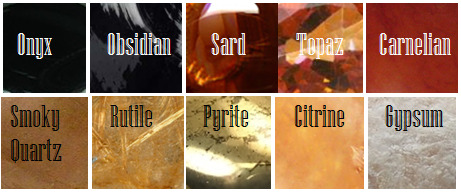
Pictured above: Onyx, Obsidian, Sard, Topaz, Carnelian, Smoky Quartz, Rutile, Pyrite, Citrine, Gypsum
These are trickier to use. As with some complex colors, the writer will have to get us to understand what most of these look like.
If you use these, or any more rare description, consider if it actually “fits” the book or scene.
Even if you’re able to get us to picture what “rutile” looks like, why are you using this description as opposed to something else? Have that answer for yourself.
“His skin reminded her of the topaz ring her father wore at his finger, a gleaming stone of brown, mellow facades.”
P H Y S I C A L D E S C R I P T I ON
Physical character description can be more than skin tone.
Show us hair, eyes, noses, mouth, hands…body posture, body shape, skin texture… though not necessarily all of those nor at once.
Describing features also helps indicate race, especially if your character has some traits common within the race they are, such as afro hair to a Black character.
How comprehensive you decide to get is up to you. I wouldn’t overdo it and get specific to every mole and birthmark. Noting defining characteristics is good, though, like slightly spaced front teeth, curls that stay flopping in their face, hands freckled with sunspots…
G E N E R A L T I P S
Indicate Race Early: I suggest indicators of race be made at the earliest convenience within the writing, with more hints threaded throughout here and there.
Get Creative On Your Own: Obviously, I couldn’t cover every proper color or comparison in which has been “approved” to use for your characters’ skin color, so it’s up to you to use discretion when seeking other ways and shades to describe skin tone.
Skin Color May Not Be Enough: Describing skin tone isn’t always enough to indicate someone’s ethnicity. As timeless cases with readers equating brown to “dark white” or something, more indicators of race may be needed.
Describe White characters and PoC Alike: You should describe the race and/or skin tone of your white characters just as you do your Characters of Color. If you don’t, you risk implying that White is the default human being and PoC are the “Other”).
PSA: Don’t use “Colored.” Based on some asks we’ve received using this word, I’d like to say that unless you or your character is a racist grandmama from the 1960s, do not call People of Color “colored” please.
Not Sure Where to Start? You really can’t go wrong using basic colors for your skin descriptions. It’s actually what many people prefer and works best for most writing. Personally, I tend to describe my characters using a combo of basic colors + modifiers, with mentions of undertones at times. I do like to veer into more creative descriptions on occasion.
Want some alternatives to “skin” or “skin color”? Try: Appearance, blend, blush, cast, coloring, complexion, flush, glow, hue, overtone, palette, pigmentation, rinse, shade, sheen, spectrum, tinge, tint, tone, undertone, value, wash.
Skin Tone Resources
List of Color Names
The Color Thesaurus
Things that are Brown (blog)
Skin Undertone & Color Matching
Tips and Words on Describing Skin
Photos: Undertones Described (Modifiers included)
Online Thesaurus (try colors, such as “red” & “brown”)
Don’t Call me Pastries: Creative Skin Tones w/ pics 3 2 1
Writing & Description Guides
WWC Featured Description Posts
WWC Guide: Words to Describe Hair
Writing with Color: Description & Skin Color Tags
7 Offensive Mistakes Well-intentioned Writers Make
I tried to be as comprehensive as possible with this guide, but if you have a question regarding describing skin color that hasn’t been answered within part I or II of this guide, or have more questions after reading this post, feel free to ask!
~ Mod Colette
167K notes
·
View notes
Text
Ambient sounds for writers
Find the right place to write your novel…
Nature
Arctic ocean
Blizzard in village
Blizzard in pine forest
Blizzard from cave
Blizzard in road
Beach
Cave
Ocean storm
Ocean rocks with rain
River campfire
Forest in the morning
Forest at night
Forest creek
Rainforest creek
Rain on roof window
Rain on tarp tent
Rain on metal roof
Rain on window
Rain on pool
Rain on car at night
Seaside storm
Swamp at night
Sandstorm
Thunderstorm
Underwater
Wasteland
Winter creek
Winter wind
Winter wind in forest
Howling wind
Places
Barn with rain
Coffee shop
Restaurant with costumers
Restaurant with few costumers
Factory
Highway
Garden
Garden with pond and waterfall
Fireplace in log living room
Office
Call center
Street market
Study room from victorian house with rain
Trailer with rain
Tent with rain
Jacuzzi with rain
Temple
Temple in afternoon
Server room
Fishing dock
Windmill
War
Fictional places
Chloe’s room (Life is Strange)
Blackwell dorm (Life is Strange)
Two Whales Diner (Life is Strange)
Star Wars apartment (Star Wars)
Star Wars penthouse (Star Wars)
Tatooine (Star Wars)
Coruscant with rain (Star Wars)
Yoda’s hut with rain ( Star Wars)
Luke’s home (Star Wars)
Death Star hangar (Star wars)
Blade Runner city (Blade Runner)
Askaban prison (Harry Potter)
Hogwarts library with rain (Harry Potter)
Ravenclaw tower (Harry Potter)
Hufflepuff common room (Harry Potter)
Slytherin common room (Harry Potter)
Gryffindor common room (Harry Potter)
Hagrid’s hut (Harry Potter)
Hobbit-hole house (The Hobbit)
Diamond City (Fallout 4)
Cloud City beach (Bioshock)
Founding Fathers Garden (Bioshock)
Things
Dishwasher
Washing machine
Fireplace
Transportation
Boat engine room
Cruising boat
Train ride
Train ride in the rain
Train station
Plane trip
Private jet cabin
Airplane cabin
Airport lobby
First class jet
Sailboat
Submarine
Historical
Fireplace in medieval tavern
Medieval town
Medieval docks
Medieval city
Pirate ship in tropical port
Ship on rough sea
Ship cabin
Ship sleeping quarter
Titanic first class dining room
Old west saloon
Sci-fi
Spaceship bedroom
Space station
Cyberpunk tearoom
Cyberpunk street with rain
Futuristic server room
Futuristic apartment with typing
Futuristic rooftop garden
Steampunk balcony rain
Post-apocalyptic
Harbor with rain
City with rain
City ruins turned swamp
Rusty sewers
Train station
Lighthouse
Horror
Haunted mansion
Haunted road to tavern
Halloween
Stormy night
Asylum
Creepy forest
Cornfield
World
New York
Paris
Paris bistro
Tokyo street
Chinese hotel lobby
Asian street at nightfall
Asian night market
Cantonese restaurant
Coffee shop in Japan
Coffee shop in Paris
Coffee shop in Korea
British library
Trips, rides and walkings
Trondheim - Bodø
Amsterdam - Brussels
Glasgow - Edinburgh
Oxford - Marylebone
Seoul - Busan
Gangneung - Yeongju
Hiroshima
Tokyo metro
Osaka - Kyoto
Osaka - Kobe
London
São Paulo
Seoul
Tokyo
Bangkok
Ho Chi Minh (Saigon)
Alps
New York
Hong Kong
Taipei
290K notes
·
View notes
Text
Ways to un-stick a stuck story
Do an outline, whatever way works best. Get yourself out of the word soup and know where the story is headed.
Conflicts and obstacles. Hurt the protagonist, put things in their way, this keeps the story interesting. An easy journey makes the story boring and boring is hard to write.
Change the POV. Sometimes all it takes to untangle a knotted story is to look at it through different eyes, be it through the sidekick, the antagonist, a minor character, whatever.
Know the characters. You can’t write a story if the characters are strangers to you. Know their likes, dislikes, fears, and most importantly, their motivation. This makes the path clearer.
Fill in holes. Writing doesn’t have to be linear; you can always go back and fill in plotholes, and add content and context.
Have flashbacks, hallucinations, dream sequences or foreshadowing events. These stir the story up, deviations from the expected course add a feeling of urgency and uncertainty to the narrative.
Introduce a new mystery. If there’s something that just doesn’t add up, a big question mark, the story becomes more compelling. Beware: this can also cause you to sink further into the mire.
Take something from your protagonist. A weapon, asset, ally or loved one. Force him to operate without it, it can reinvigorate a stale story.
Twists and betrayal. Maybe someone isn’t who they say they are or the protagonist is betrayed by someone he thought he could trust. This can shake the story up and get it rolling again.
Secrets. If someone has a deep, dark secret that they’re forced to lie about, it’s a good way to stir up some fresh conflict. New lies to cover up the old ones, the secret being revealed, and all the resulting chaos.
Kill someone. Make a character death that is productive to the plot, but not “just because”. If done well, it affects all the characters, stirs up the story and gets it moving.
Ill-advised character actions. Tension is created when a character we love does something we hate. Identify the thing the readers don’t want to happen, then engineer it so it happens worse than they imagined.
Create cliff-hangers. Keep the readers’ attention by putting the characters into new problems and make them wait for you to write your way out of it. This challenge can really bring out your creativity.
Raise the stakes. Make the consequences of failure worse, make the journey harder. Suddenly the protagonist’s goal is more than he expected, or he has to make an important choice.
Make the hero active. You can’t always wait for external influences on the characters, sometimes you have to make the hero take actions himself. Not necessarily to be successful, but active and complicit in the narrative.
Different threat levels. Make the conflicts on a physical level (“I’m about to be killed by a demon”), an emotional level (“But that demon was my true love”) and a philosophical level (“If I’m forced to kill my true love before they kill me, how can love ever succeed in the face of evil?”).
Figure out an ending. If you know where the story is going to end, it helps get the ball rolling towards that end, even if it’s not the same ending that you actually end up writing.
What if? What if the hero kills the antagonist now, gets captured, or goes insane? When you write down different questions like these, the answer to how to continue the story will present itself.
Start fresh or skip ahead. Delete the last five thousand words and try again. It’s terrifying at first, but frees you up for a fresh start to find a proper path. Or you can skip the part that’s putting you on edge – forget about that fidgety crap, you can do it later – and write the next scene. Whatever was in-between will come with time.
135K notes
·
View notes
Text
Writing Body Language
How to Improve your writing
This is something that happens every day in your life. A shift of your eyebrow in skepticism, or the way your lip may twitch to a half smile cause you’re trying not to laugh. These behaviors are vital for writing in character, because not only do the allow you to visually see what is happening but it is also reaffirming whatever emotion your character is showing.
So why should you write it?
Much of human communication is non-verbal which means you need to also translate this non-verbal reaction in a post. It allows you to greatly enhance the emotions of another character and always another person to ‘visually’ see how they feel in a post. Most of all, this will add depth and volume to your post to make it feel more real. IT will make your character feel like a human instead of just another fictional person you look at from above.
Below you will find a list different type of emotions and what sort of body language can be exhibited to them.


Three ways to accent an action.
When writing about emotions, there are different ways to verbally write them out. Each one is unique in their own way, allowing you to show more about the emotion.
Emphasize the Emotion.
But doing this, you are expressing both the emotion and the body language. We’ll use a simple example. It’s short and simple yet you can sense he is happy.
John felt so happy that he was humming a tune while walking down the hall.
Complicate the Emotion.
Sometimes, even when you are feeling one emotion, deep down rooted underneath the facade of it all, there is actually an underlining emotion they feel. This is something you have to truly express otherwise no one will know.
John felt so happy that he was humming a tune while walking down the hall. However, it was obvious by the way his nose crinkled that he was disgusted by the actions beforehand. Instead, John covered it up by appearing pleased today.
Contradict the Emotion.
This is a little different than complicate. Contradicting means that you are claiming one thing when in fact its the other. In many ways, this has a variety of uses, from inner depth of the truth to what you see in person, or someone creating a wall. It could be considered a lie, but when is anything that easy?
John felt so happy that he was humming a tune while walking down the hall. In truth, once he was in the classroom, his shoulders slumped and a pout crossed his lips when no one was around, showing just how displeased he was with the situation.
Remember that you do not always have to contradict or complicate anything. Sometimes all you need to do is emphasize and that will be just fine. You don’t always have to have an underlining complicated for an emotion to make it more enhanced.
Do be afraid to use the Thesaurus to also improve an emotion. Such things as “happy” is a nice emotional word, but think of how much more powerful it is when you heard some is “overjoyed” or “content.” She how these emotions matched up with a body language can give two different styles of happiness? Mix and match to find what works best for your character at the time.
More In Depth Information
What I’ve stated above is more of a simplistic overview. IF you truly want to improve yourself, go to this
LINK HERE
To see just how much body language can reveal about a person. You will find things such as how a person lies, how the eyes reaction, the positioning of a person in personal space, mouth, and head body language and so much more.
Use these resources to greatly increase the reactions of your character to another and create a more life-like world.
78K notes
·
View notes
Photo


Hey everyone! Here are your journal prompts for November! Hope you enjoy them. :)
All you need to do to participate is respond to the writing prompt for each day in your own words, use art or any medium you want to, snap a photo of your finished product (or keeping your personal pages to yourself as you follow along is okay too! You don’t have to post if you don’t want to. This challenge is just to help inspire you to write!) and tag #journaling-junkie, and #2017novemberjournalchallenge so we can all like and share your awesome creations!
Feel free to write me a letter if you have any questions and I will do my best to help you!
For those of you participating in NaNoWriMo, I wish you the best of luck writing your novels this month! You rock!
Happy writing, friends! :)
843 notes
·
View notes
Photo


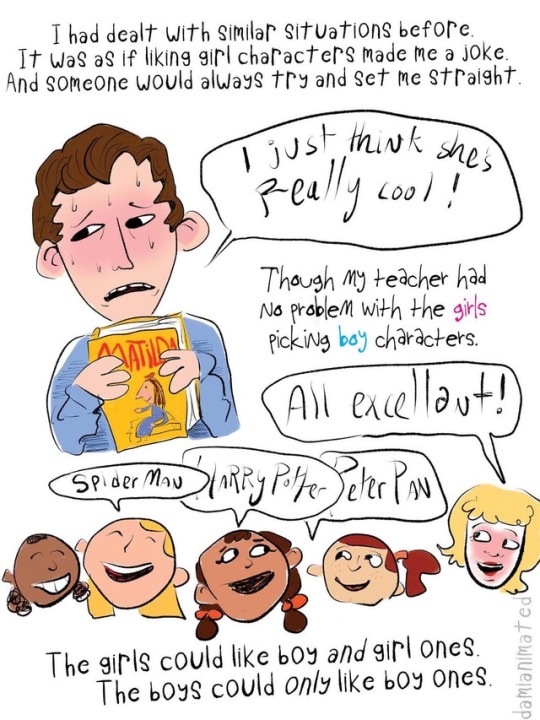

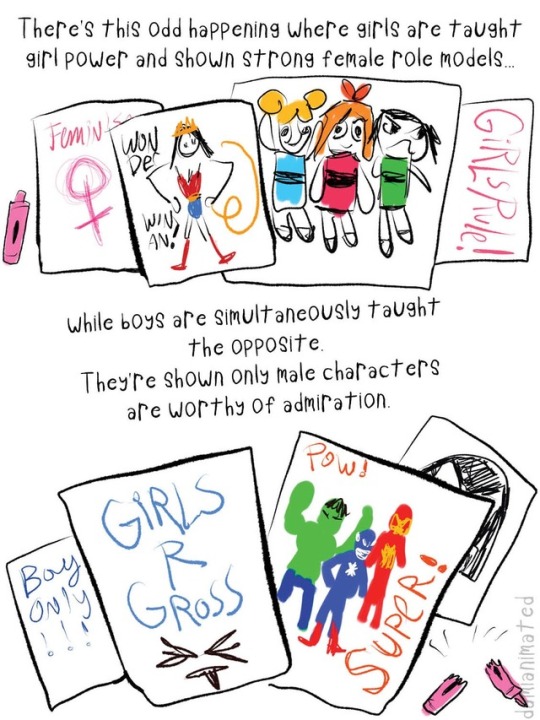

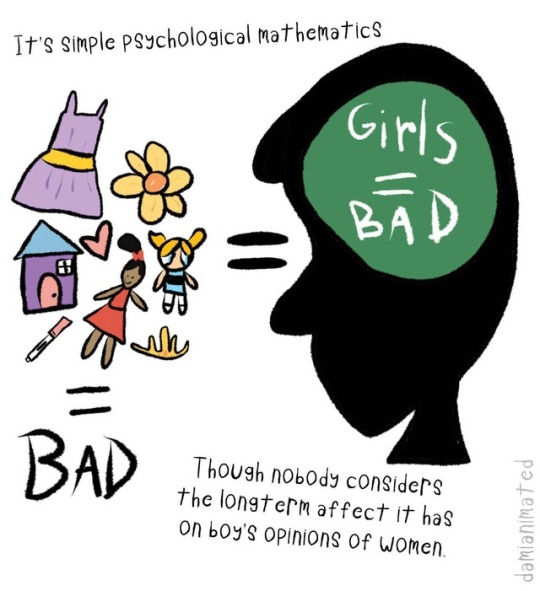



At Target this lady told her son he couldn’t have a Wonder Woman doll because “that’s for girls” and then bought her daughter the same one. It got me thinking about how often I see people bar young boys from appreciating girls/women as protagonists and heroes, and my own experience with it as a kid.
274K notes
·
View notes
Link
Hey guys. I don’t normally post this sort of stuff on this tumblr, or even ask for anything at all. But life sucks sometimes and I could use all the support I can get.
My radiation hasn’t started yet, but I can’t even imagine what the future is going to be like with this. The tumor is big enough that I know it isn’t going to be a cakewalk.
Please, even if you can’t afford it yourself, reblog so that maybe others can.
Thank you all in advance!
0 notes
Text
writers:
break up your paragraphs. big paragraphs are scary, your readers will get scared
fuuuuck epithets. “the other man got up” “the taller woman sat down” “the blonde walked away” nahhh. call them by their names or rework the sentence. you can do so much better than this (exception: if the reader doesn’t know the character(s) you’re referring to yet, it’s a-okay to refer to them by an identifying trait)
blunette is not a thing
new speaker, new paragraph. please.
“said” is such a great word. use it. make sweet love to it. but don’t kill it
use “said” more than you use synonyms for it. that way the use of synonyms gets more exciting. getting a sudden description of how a character is saying something (screaming, mumbling, sighing) is more interesting that way.
if your summary says “I suck at summaries” or “story better than summary” you’re turning off the reader, my dude. your summary is supposed to be your hook. you gotta own it, just like you’re gonna own the story they’re about to read
follow long sentences w short ones and short ones w long ones. same goes for paragraphs
your writing is always better than you think it is. you just think it’s bad because the story’s always gonna be predicable to the one who’s writing it
i love u guys keep on trucking
226K notes
·
View notes
Photo

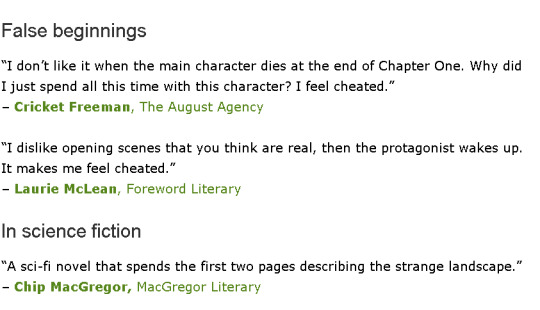



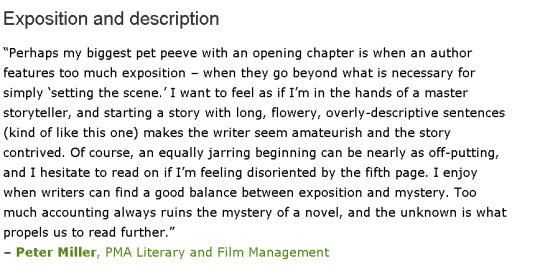
57K notes
·
View notes
Text
Narrative Voice
Narrative voice is one of those things editors and agents look out for as a sign of raw talent. It’s something people say can’t be taught. Either you have it or you don’t.
This may be true, partly, but it doesn’t mean that you can’t make any conscious decisions about your narrative voice.
I love playing around with my voice in different pieces that I write, and I thought I would share some advice on how you could have some fun with your own narrative voice as well.
I would argue that in most novels, about 50% of voice comes from the author’s own voice and natural storytelling abilities. This may change overtime, but mostly it’s just you. Writing as you write. The other 50%, I’d say comes down to writing like your narrator is telling a story to an audience. This means asking yourself two questions.
1. WHO IS TELLING THE STORY?
This is pretty simple in 1st person point of view: know who your character is and let them tell the story. Know what their opinions are. What interests them. The things they like and dislike. If they’re angry or optimistic or scared. If they use slang or speak like a professor. A voice should grow naturally out of that information.
In 3rd person, when your narrator is a non-participant, there are two options:
The first is to tell the story strictly as yourself, in 100% your own voice, and let it change naturally as you suit it to fit your story. This means being confident in your abilities as a storyteller and just telling the story.
The other option is to put on a costume. This narrator is you, but perhaps it is you as a grandfather, or you as a historian, or simply of yourself as someone funnier or wittier than you think you actually are. It’s still your voice. It’s still you telling the story, but you’re drawing out a particular aspect of your voice that enhances the story you’re telling.
This option is more complicated than the others. This is consciously changing your voice. I believe it can be done: that grandfather might help you get into a certain mindset if you want your story to have that kindly touch of “Mr. and Mrs. Dursley of Number 4 Privet Drive were proud to say…” Thinking of yourself as a historian might add a formal sort of flare to your high fantasy novel. Believing you’re hilarious may give you the confidence to put sillier elements into your story.
2. WHO ARE THEY TELLING IT TO?
I don’t mean this in terms of who you imagine is going to read your book. That’s a different matter entirely. What I’m talking about here is the narrator’s audience. This is usually just an audience imagined by the author, unless the format of the novel is epistolary or journal entry, or the narrator references them outright. Even so, it can be helpful to remember, however, that every story is told to someone. This can be intentional or unintentional, but it drastically changes how the story is told.
Here are some types of audiences:
A friend, which means they’re telling the story in an honest and casual manner, as though the reader is someone they trust with their innermost thoughts. I would say this is the most common “audience” for a novel told in the 1st person.
ex. The Shades of London series by Maureen Johnson
Someone they want to persuade, which depending on their character could mean being unreliable and defensive, or confessional and apologetic. They might be keeping a few secrets about their thoughts and feelings from the reader, and maybe even lying to the reader and/or themselves.
ex. The White Tiger by Aravind Adiga
Historical record, which is not actually for historical record, but a more formal 3rd person that doesn’t focus on interacting with the reader so much as honestly reporting thoughts and events as they occur. I would say that this is one of the most common “audiences” for a novel written in 3rd person.
ex. A Song of Ice and Fire by George R.R. Martin
An audience referenced in the text itself. This is a book in full story-telling mode, where a 3rd person narrator both refers to the imagined audience and the fact that they are telling a story directly on the page. This is an older style of storytelling used to be more common than it is today. The imagined audience can be a certain type of reader (children in many classic children’s books). It can also be an audience that only exists in the word of the story itself, like prospective dragon naturalists.
ex. The Hobbit by J.R.R. Tolkien
ex. A Natural History of Dragons by Marie Brennan
Once you’ve settled these two matters, you have a structure for your narrative voice in place. The rest, depends on your voice as an author, and for that I can only give the following advice:
Read. Pay close attention to the voices of the books you admire, the way the narrative interacts with you as a reader and with the events of the text. Consider why you admire certain storytelling features and how you might implement similar features in your own writing.
Write and write a lot. Every word you put on the page is a choice you’ve made. Every choice you make will hone your voice, completely subconsciously.
Have fun telling your story. Don’t worry about the voice being polished or “good,” just tell the story in a way that’s enjoyable for you. If you’d like, experiment with different styles. Practice telling stories in the voices of people who don’t sound exactly like you. Try on ridiculous costumes. When you have fun telling a story, your reader will have fun listening to it.
1K notes
·
View notes
Text
Things I Try to Remember When I’m Nervous About Writing
1. Write what you want to read.
2. There is no problem with a story so great that it cannot be fixed in revision. Keep going.
3. If your story is as uncreative as you think it is, you wouldn’t want to write it so badly. You want to write it because there’s a unique spin on it you have never seen, and want to express. Many people may write similar stories, but it’s the details that make it personal. You may not know it now, but there is someone who is looking for exactly what you’re writing. If you don’t finish it, they’ll never see it.
4. You can write something amazing and still be met with silence. There are myriad reasons for this that have nothing to do with the quality of what you produce.
4.1 It’s okay to repeat post your work if no one has seen it.
4.2 It’s okay to post your work in multiple places.
5. You don’t have to agree with every criticism (but take it gracefully anyway).
6. Most writers are scared of the same things you are.
7. Don’t judge your works in progress against the archives of finished, polished stories other writers have put together. Archives are Internet portfolios and generally don’t show all the multitude of failures, incomplete, and draft-form works those writers are also struggling with. They aren’t perfect and you don’t have to be, either. Keep working and you will have a portfolio of your own.
8. Don’t be afraid to share your ideas with other writers. It’s not annoying as long as you’re not self-important about it. Be humble and gracious, and others will reciprocate.
8.1 You can’t write as well in a vacuum; the more people know that you are working on something, and what, the more support you will get for that work. Starting a dialogue before you post something will make it more likely people will read it when you do post it.
9. It’s okay to take breaks. If the ideas just aren’t coming, go do something else for a while.
10. Be kind to yourself. Don’t call yourself names. You are not stupid, or uncreative, or boring. You wouldn’t call other people those things, so don’t do it to yourself.
I don’t know if these are helpful to other people, but they are helpful to me, so just in case, here they are!
36K notes
·
View notes
Quote
The first step to becoming a better writer is believing your own experience is worth writing about.
Peter Marmorek
(via psliterary)
295 notes
·
View notes
Photo

9K notes
·
View notes

